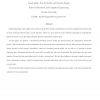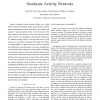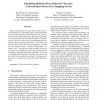42 search results - page 3 / 9 » Peer to Peer Networks for Defense Against Internet Worms |
WORM
2003
13 years 8 months ago
2003
Due to the fast spreading nature and great damage of Internet worms, it is necessary to implement automatic mitigation, such as dynamic quarantine, on computer networks. Enlighten...
DSN
2005
IEEE
14 years 19 days ago
2005
IEEE
Self-propagating codes, called worms, such as Code Red, Nimda, and Slammer, have drawn significant attention due to their enormous adverse impact on the Internet. There is a grea...
SPRINGSIM
2007
13 years 8 months ago
2007
— Stochastic activity networks (SANs) are a widely used formalism for describing complex systems that have random behavior. Sophisticated software tools exist for the modeling an...
INFOCOM
2003
IEEE
14 years 9 days ago
2003
IEEE
— It has been clear since 1988 that self-propagating code can quickly spread across a network by exploiting homogeneous security vulnerabilities. However, the last few years have...
SASO
2007
IEEE
14 years 1 months ago
2007
IEEE
Many unstructured peer to peer (P2P) systems rely on a Peer Sampling Service (PSS) that returns randomly sampled nodes from the population comprising the system. PSS protocols are...



